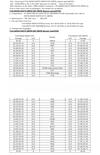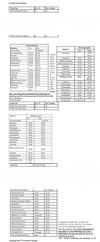| |||||||||||||||||||||||||||||||||||
| Post PNR | Post Blog | Advanced Search |
Filters:
Page# 674454 Blog Entries next>>
Trip Started: Thu Apr 25 by Tej Kumar Yadav~
0 | updating ... |
First time hometown journey end to end in single train
48 Posts
1 km from @BGZ: Bahadurgarh 15km/h 25m late
@BGZ: Bahadurgarh &0 km/h Somebody pulled the alarm chain
@BGZ: Bahadurgarh &0 km/h Somebody pulled the alarm chain
AC coach ka Washroom use krlo bhai Kidney kharab ho jayega nhi kiye to 😂 .
Various specials to clear extra rush during elections in Ap ( cct ns area), smvb ghy smvb special
Aa Santa ke 1lacs Mandi vacharu yesterday. Dont worry Ongole nellore kuda vestaru spls.
this bza div. doesn't give halt at Nellore for NorthWB/northeast trains everytime eventhough it has higher no. of travellers
Done some analysis on travellers occupancy last week (14Apr-20Apr) for all northWB/NE trains from south BZA div.
Edit1:...
more...
Done some analysis on travellers occupancy last week (14Apr-20Apr) for all northWB/NE trains from south BZA div.
Edit1:...
more...
Yes nlr should get instead of gdr for trains coming from ru side, anyhow towards chennai gdr being zonal interchange point it gets halt sometimes
3 Posts
All surprises Vskp Kolkam, Benguluru then Chennai and Hatia. Vskp Chennai return rake to Vskp arrival on Sunday should leave to Hatia and will be late in both directions. Now they are 2 extra rakes in Vskp working as spls 2 ICF and 1 LHB. 2 ICF rakes Benguluru, LHB to Chennai.
election impact? with this most of the vizag travelers would happy.
2 general coaches added for above specials for unreserved passengers
Today (20:03) 12247/Bandra Terminus - Hazrat Nizamuddin Yuva Express (PT) | ADH/Andheri (9 PFs)
akshay30005
akshay30005 67 blog postsPage# 674454 Blog Entries next>>
Travel SAFE
1. RailFanning does NOT MEAN dangerous pics/videos.
2. Doorplating pics/youtube videos are strictly FORBIDDEN in IRI.
3. Take plenty of food pics and other safe pics.
4. Write human interest narratives to make the pics interesting.
5. Enjoy blogging and travelling SAFELY.
REMEMBER: YOUR LIFE is the most precious thing, NOT RailFanning.
Scroll to Top









